Gochujang tuna salad takes your average tuna salad and makes it special with the addition of sweet, spicy and complex Korean gochujang.
Tuna salad can seem a bit boring. Honestly, I don’t personally eat it too often.
But the addition of one simple ingredient – gochujang – really transforms the classic sandwich spread into something more complex, more spicy, and all around more tasty.
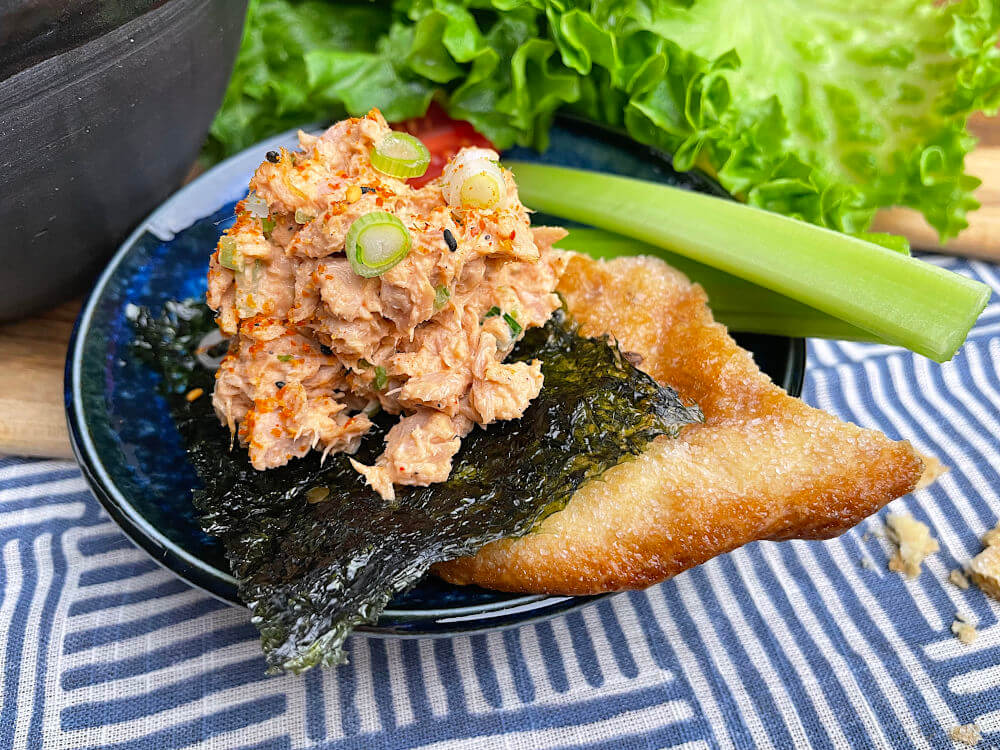
What is gochujang tuna salad?
Gochujang tuna salad is similar to classic tuna salad, but with the addition of Korean gochujang paste.
The ingredients include gochujang, canned tuna, kewpie mayo, scallions, celery and optionally some shichimi togarashi sprinkled on top.
The gochujang adds complexity in flavor to otherwise bland tuna salad. Its flavor is sweet, spicy, a bit pungent, and dripping with umami. It really transforms tuna salad into something with a lot more flavor.
The tuna salad can be served like any ordinary tuna salad: on sandwiches, on crackers or flatbread, or with vegetables.
What is gochujang?
Gochujang is a Korean condiment made of fermented soybeans, red chili, glutinous rice, and salt.
It has a complex flavor profile of deep sweetness, spiciness, a bit of pungency, and a ton of umami. The flavor is really unique and difficult to compare to any other ingredient. There’s not a good substitute.
The spiciness of gochujang can vary, with some being super spicy and others not spicy at all. There’s often an indication of the spiciness level on the package of the gochujang.
Gochujang is an absolutely essential staple in Korean cooking. It gives so many Korean dishes their unmistakable Korean taste.
It has many different uses such as a marinade for meat, to flavor stews (such as Korean Army Stew) or as a base for sauces (like in the creamy, cheesy Rose Tteokbokki), or as a dipping or topping sauce (for example in bibimbap).
If you want to cook Korean food, you’ll definitely need a tub of gochujang. Luckily it’s now pretty popular in the US and you can likely find it in the Asian section of your grocery store. If not, Amazon also sells it.
Gochujang paste vs gochujang sauce
When a recipe calls for “gochujang”, it refers to gochujang paste rather than gochujang sauce. The paste is what’s used in cooking and contains only the core ingredients of gochujang. The paste is sold in small, usually red tubs. This recipe for tuna salad uses the paste.
Gochujang sauce, on the other hand, is a diluted version of gochujang that’s mixed with other ingredients. It can be used tableside as a dipping sauce and is generally sold in squeeze bottles.
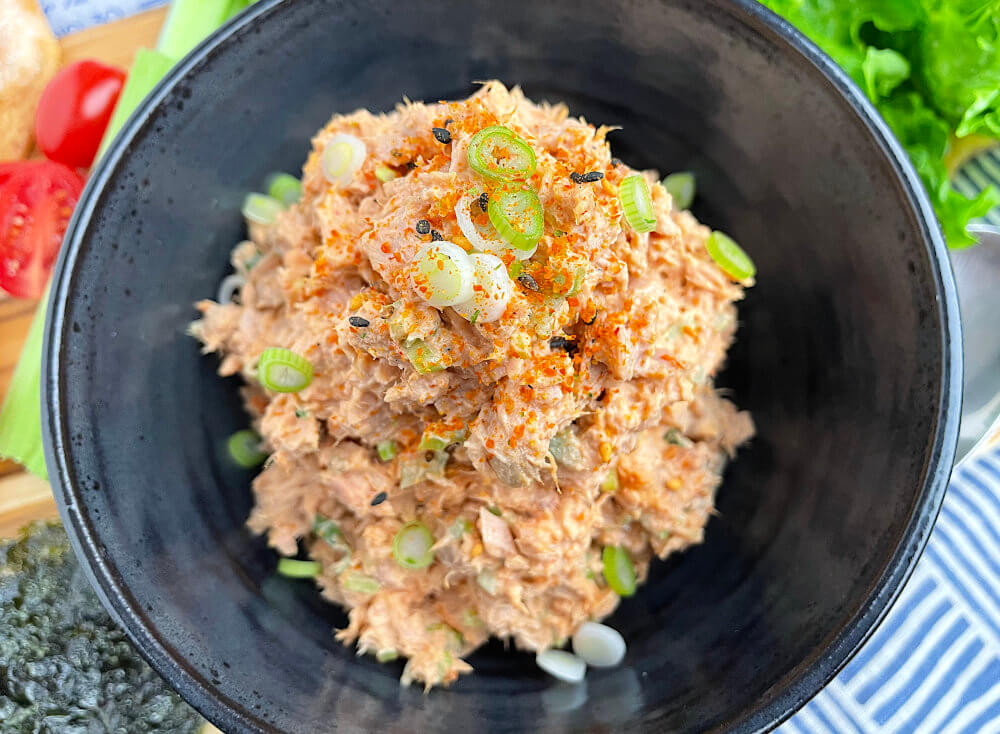
How to make gochujang tuna salad
- Prepare the vegetables. Slice the scallion into thin rounds and mince the celery into small pieces.
- Mix the ingredients. Add the vegetables along with the canned tuna, gochujang, mayo, and salt and pepper to a medium bowl. Mix thoroughly with a spoon until well combined, with few chunks of tuna remaining.
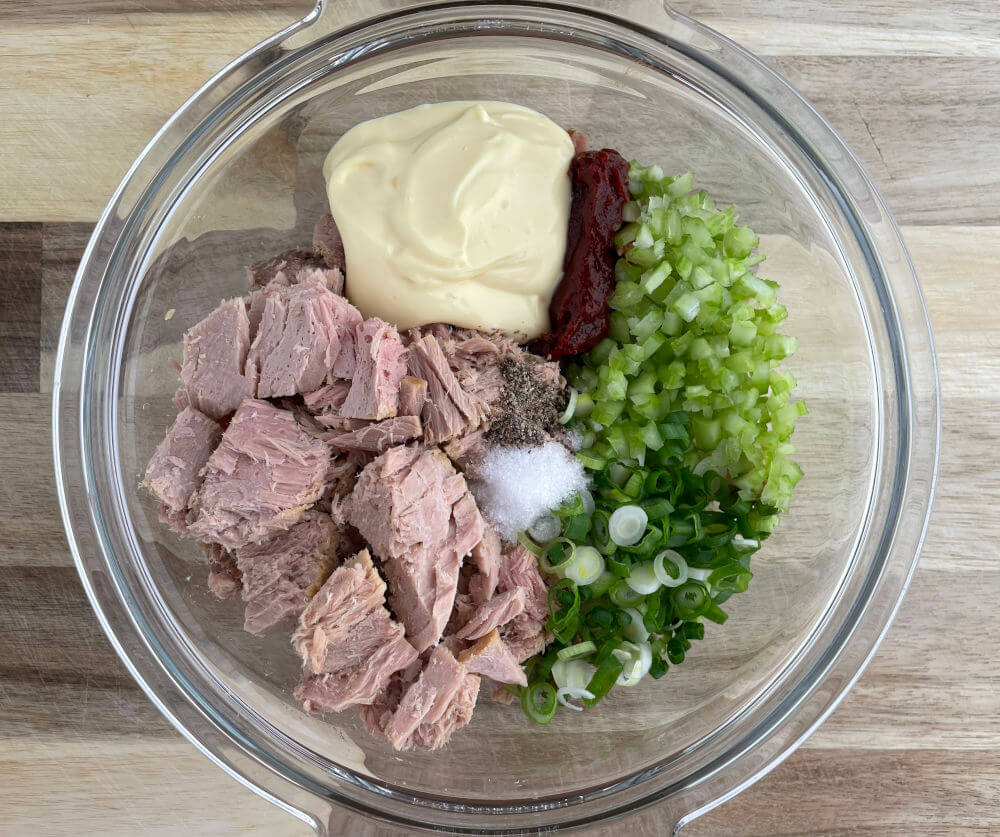
- Serve. Enjoy the tuna salad in a sandwich, with crackers, or with vegetables.
Ingredients
Gochujang. The Korean fermented paste adds amazing flavors of sweetness, spiciness and umami to classic tuna salad. Gochujang is now popular in the United States and most grocery stores sell it. Amazon also carries it.
Canned tuna. Can’t have tuna salad without the tuna.
Kewpie mayo. I love Kewpie mayo because it has more tanginess and deeper umami than North American mayonnaise. It uses only egg yolks, rather than whole eggs, giving the mayonnaise a much richer flavor. It’s an iconic Japanese ingredient and definitely worth seeking out! But if you can’t find Kewpie, you can easily use a North American mayo such as Hellmann’s in this recipe.
Scallions. Finely sliced scallions add a bit of peppery bite to the salad.
Celery. Finely minced celery provides crunch and some freshness.
Shichimi togarashi. A sprinkle of the Japanese spice mix gives the final tuna salad some extra heat. This ingredient is completely optional, so feel free to skip it if you don’t have it.
Salt and pepper. For seasoning.
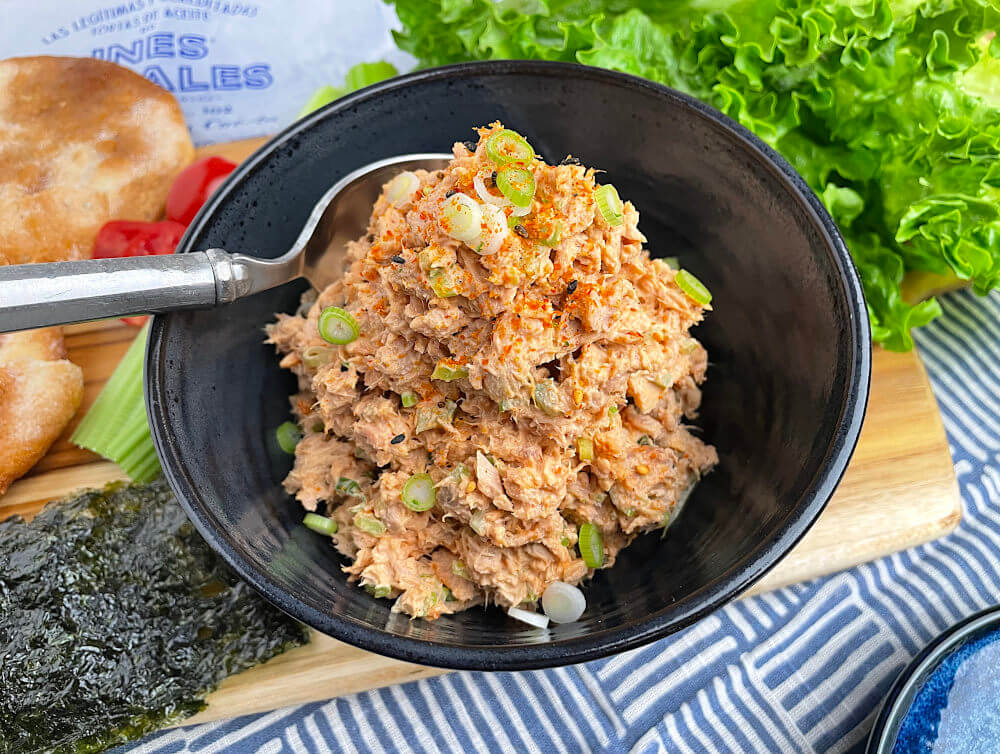
How to serve gochujang tuna salad
There are a few ways to serve this salad.
As a sandwich. Wrap the tuna between two slices of bread and add lettuce, tomatoes, onions and pickles.
With crackers or flat bread. Top some carbs with the tuna salad and eat.
As a dip with vegetables. Use celery and carrot sticks to scoop up the tuna.
Wrapped in nori seaweed snacks with rice. Wrap some tuna salad and a bit of rice in nori seaweed snacks for a quick take on sushi. Sushi rolls made with canned tuna and nori are actually quite popular in Japan and can be found at almost any konbini (Japanese-style convenience stores such as 7-11). This combination would be similar to those rolls.
Or better yet, as a gochujang tuna melt! Spread room temperature butter on two slices or bread. Place the tuna between the two slices, with the buttered sides of the bread on the outside of the sandwich. Add some cheese inside the bread. Now add more butter to a nonstick pan on low heat and cook the sandwich on both sides until browned and crisp.
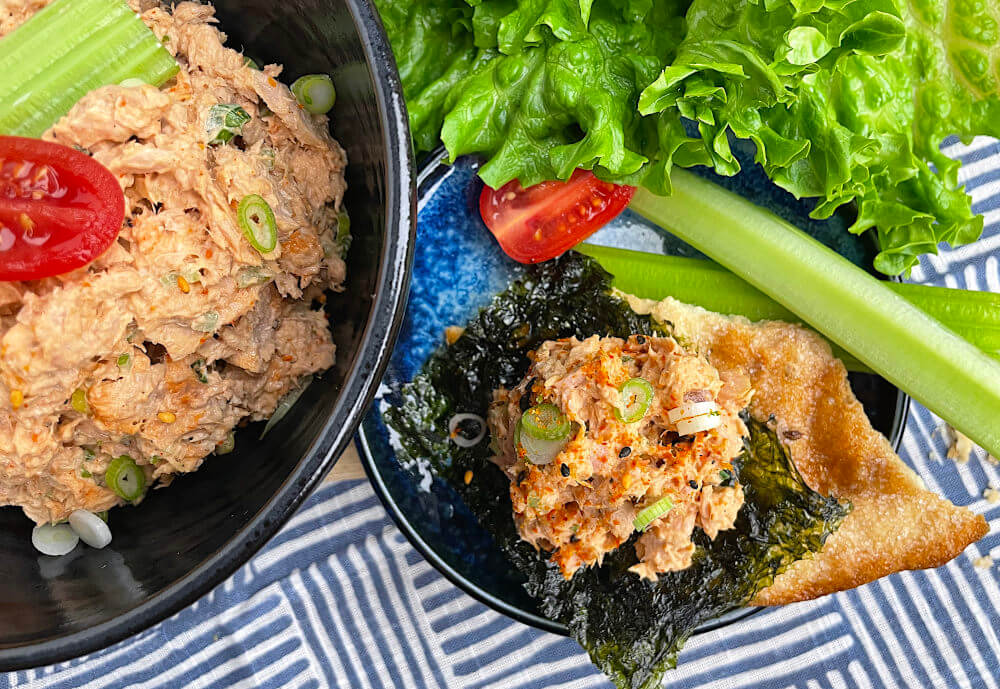
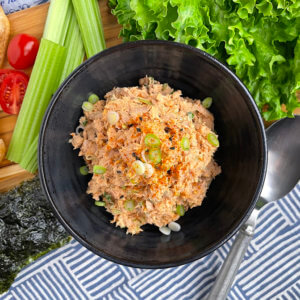
Gochujang Tuna Salad
Ingredients
- 2 5-oz cans water-packed tuna drained of water
- 1 tbsp gochujang
- ⅓ cup Kewpie mayo or substitute any other mayo
- 2 scallions
- ½ large stick celery
- ½ tsp kosher salt
- ¼ tsp pepper
- pinch shichimi togarashi for sprinkling on top, optional
Instructions
Prepare the vegetables
- Slice the scallion into thin rounds.
- Mince the celery into small pieces.
Mix the ingredients
- Add all of the ingredients except the shichimi togarashi to a medium bowl.
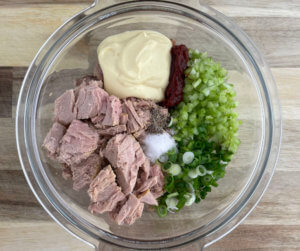
- Mix thoroughly with a spoon until well combined, with few chunks of tuna remaining.
Garnish and serve
- Place the tuna salad in a serving bowl and garnish with shichimi togarashi.
- Enjoy the tuna salad in a sandwich, on top of crackers, or as a dip with vegetables and pieces of nori.

[…] Gochujang. The traditional fermented paste is an essential part of this recipe, providing those unmistakable Korean flavors of sweetness, spiciness, and savoriness. Gochujang has become popular in the United States, and you’ll likely be able to find it in the Asian section of your local grocery shop. Check out some other recipes that use gochujang like this spicy army stew with spam and cheese or this easy gochujang tuna salad. […]